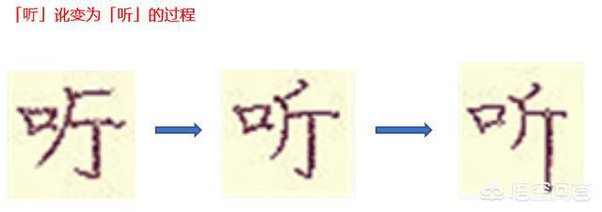I’ve wondered about this myself. I checked Lucas Lee’s source as well, but it was not very detailed, so I looked to other sources. Note that 听 (yǐn, meaning smile) is an entirely separate character, and I won’t discuss it here.
听 comes from a corrupted phono-semantic vulgar variant (俗字) of 聽 — ?. That is ⿰口厅, or 口 on the left and 厅 on the right.
Vulgar variants are non-orthodox variants used among the masses. Many (but not all) have fewer strokes than the orthodox variant.
In ⿰口厅, 口 (mouth) is the semantic hint; 厅 (tīng) is the phonetic hint. The latter component changed form so that it looked like 斤.

Since it reduced the stroke count from 22 to 7, 听 was adopted as the Simplified character for 聽.